A test charge q is moved without acceleration from A to C along the path form A to B and then from B to C in electric field E as shown in the figure.

(i) Calculate the potential difference between A and C.
(ii) At which point (of the two) is the electric potential more and why?
(i) E=≡dVdr=−(VC−VA)(2−6)=−(VC−VA)−4
⇒VC−VA=4E
(ii) As the electric field is directed from C to A, the potential will be more at C.
Topper's Solved these Questions
- ELECTROSTATIC POTENTIAL AND CAPACITANCE Book:MODERN PUBLICATIONChapter:ELECTROSTATIC POTENTIAL AND CAPACITANCE Exercise:Revision Exercises (Long Answer Questions)
Explore 13 Videos
- ELECTROSTATIC POTENTIAL AND CAPACITANCE Book:MODERN PUBLICATIONChapter:ELECTROSTATIC POTENTIAL AND CAPACITANCE Exercise:Revision Exercises (Numerical Problems)
Explore 25 Videos
- ELECTROSTATIC POTENTIAL AND CAPACITANCE Book:MODERN PUBLICATIONChapter:ELECTROSTATIC POTENTIAL AND CAPACITANCE Exercise:Revision Exercises (Fill in the Blanks)
Explore 11 Videos
- ELECTROMAGNETIC WAVESBook:MODERN PUBLICATIONChapter:ELECTROMAGNETIC WAVESExercise:CHAPTER PRACTICE TEST
Explore 14 Videos
- MAGNETISM AND MATTERBook:MODERN PUBLICATIONChapter:MAGNETISM AND MATTERExercise:CHAPTER PRACTICE TEST FOR BOARD EXAMINATION
Explore 16 Videos
Similar Questions
A test charge 'q' is moved without acceleration from A to C along the path from A to B and then from B to C in electric field E as shows in the figure. (i) Calculate the potential difference between A and C. (ii) At which point (of the two) is the electric potential more and why ?
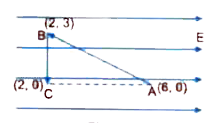
View SolutionA test charge q is moved without acceleration from A to C along the path from A to B and then from B to C in electric field E as shown in Fig. (i) Calculate the potential difference between A and C (ii) At what point [of A and C] is the electric potential more and why?
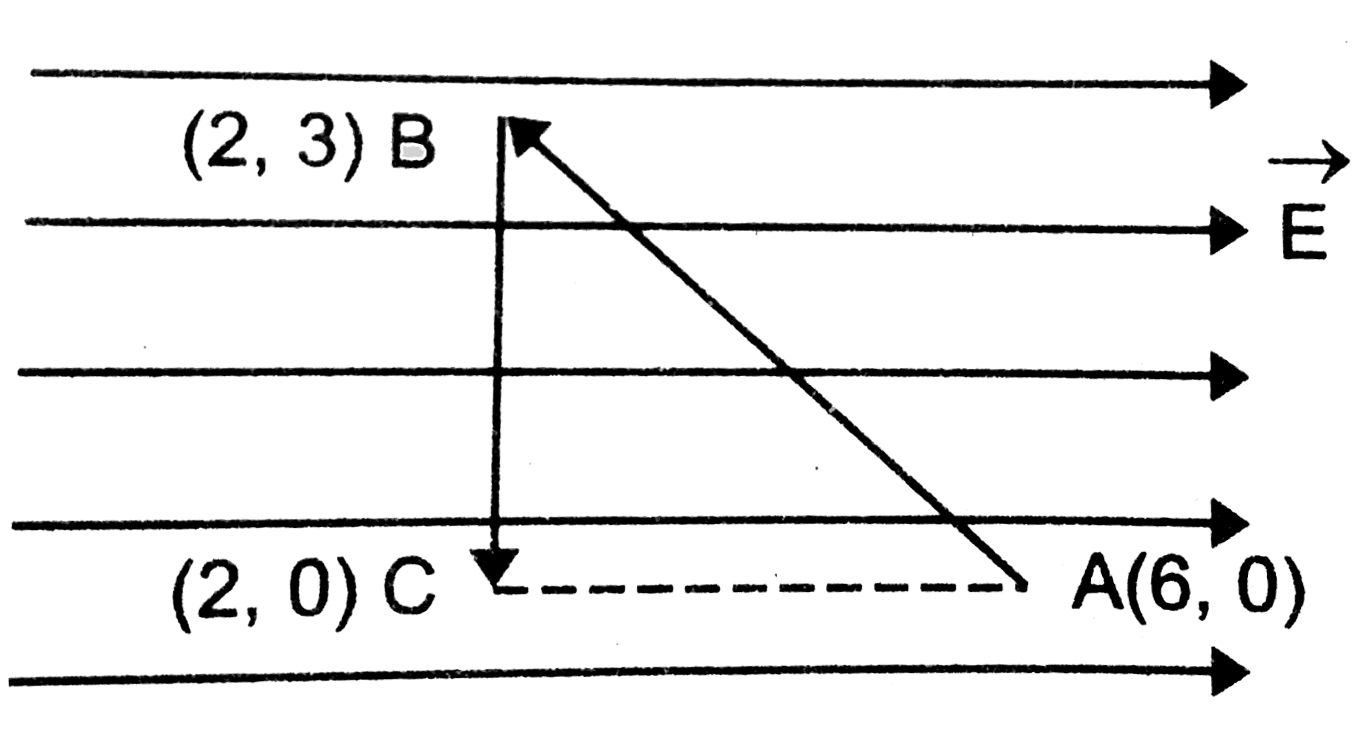
View Solution
Knowledge Check
There is a electric circuit as shown in the figure. Find potential difference between points a and b.
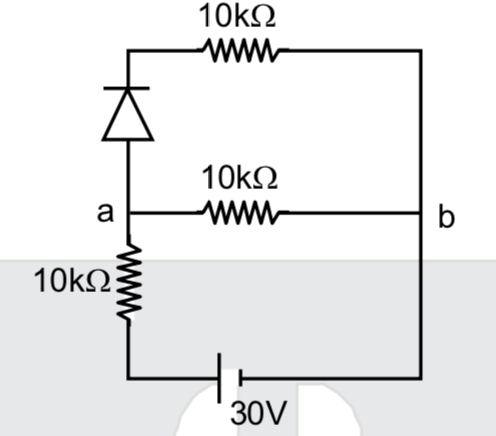 A3VB15VC10VD5V
A3VB15VC10VD5VThe potential difference between points A and B from the figure is
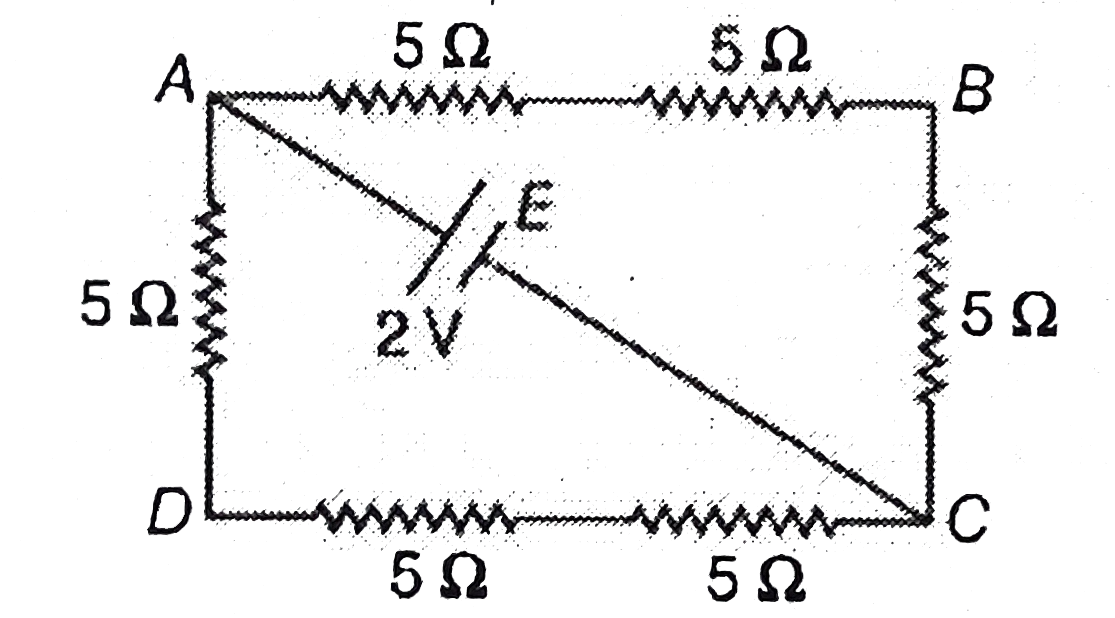 A2/3VB8/9VC4/3VD2 V
A2/3VB8/9VC4/3VD2 VConsider a unifrom electric field in a region as shown below. Then, potential difference between points A and C is given by
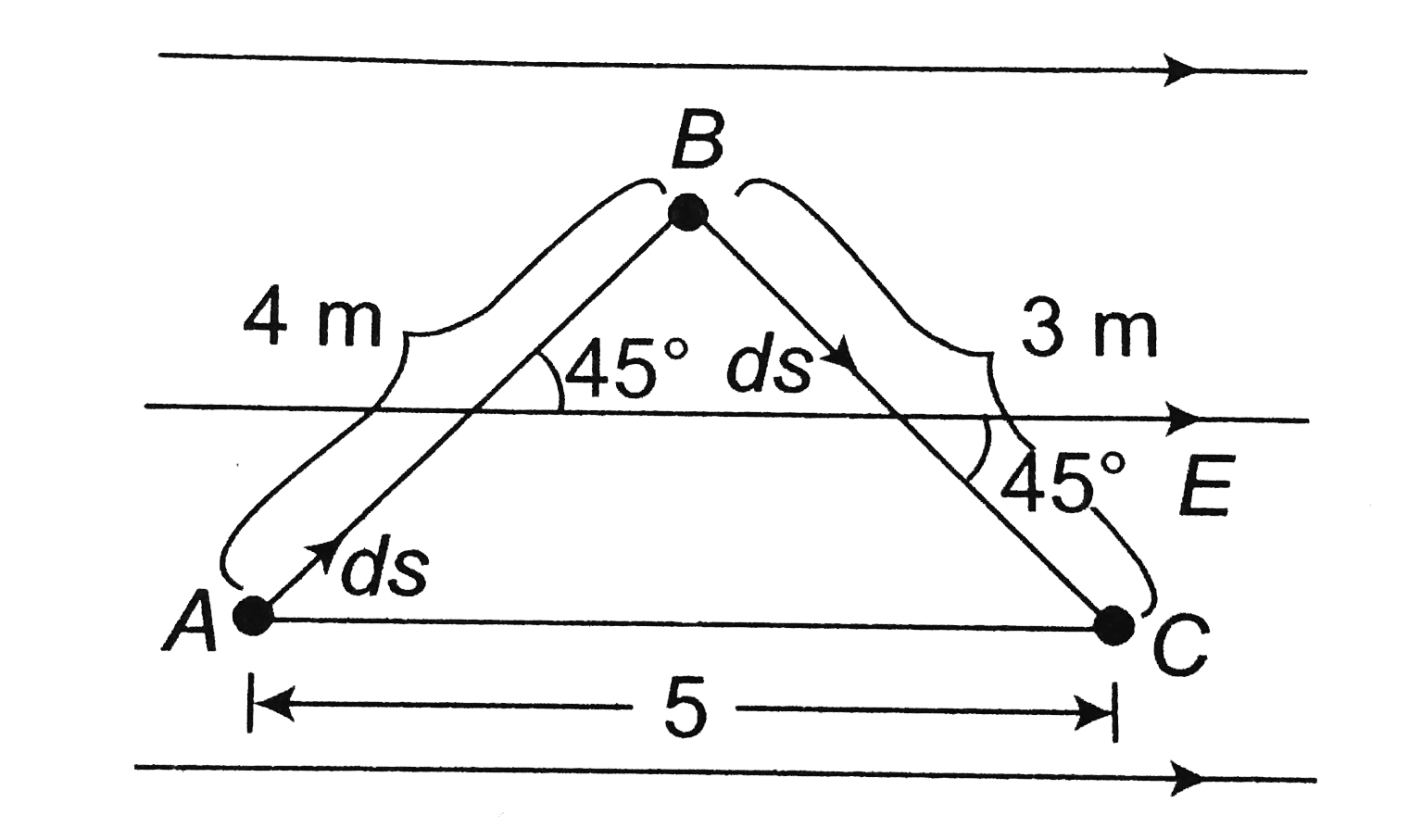 AVA−VC=−∫ABEdscos45∘+∫BCEdscos45∘BVA−VC=−∫ABEdscos45∘−∫BCEdscos45∘CVA−VC=5EDVC−VA=5E
AVA−VC=−∫ABEdscos45∘+∫BCEdscos45∘BVA−VC=−∫ABEdscos45∘−∫BCEdscos45∘CVA−VC=5EDVC−VA=5E
A test charge q0 is moved without acceleration from A to C over the path ABC as shown in Fig.
Calcualate potential difference beetween A and C.
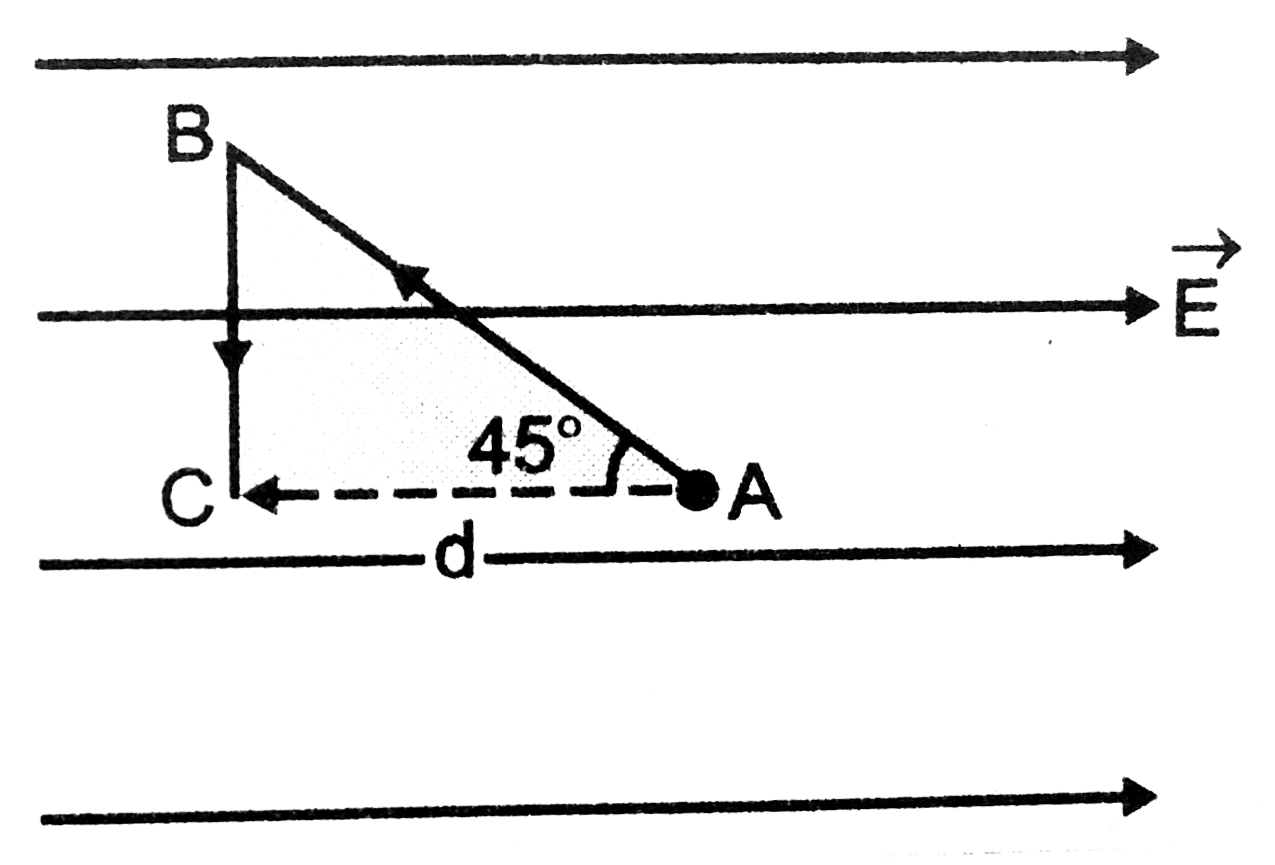
View SolutionIn circuit shown in figure calculate the potential difference between the points A and B and between the points B and C in the steady state.
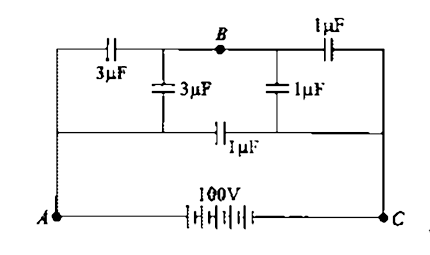
View SolutionThree points A,B,C lie in a uniform electric field E of 5×103N/C as shown in Fig. Find the potential difference between A and C.
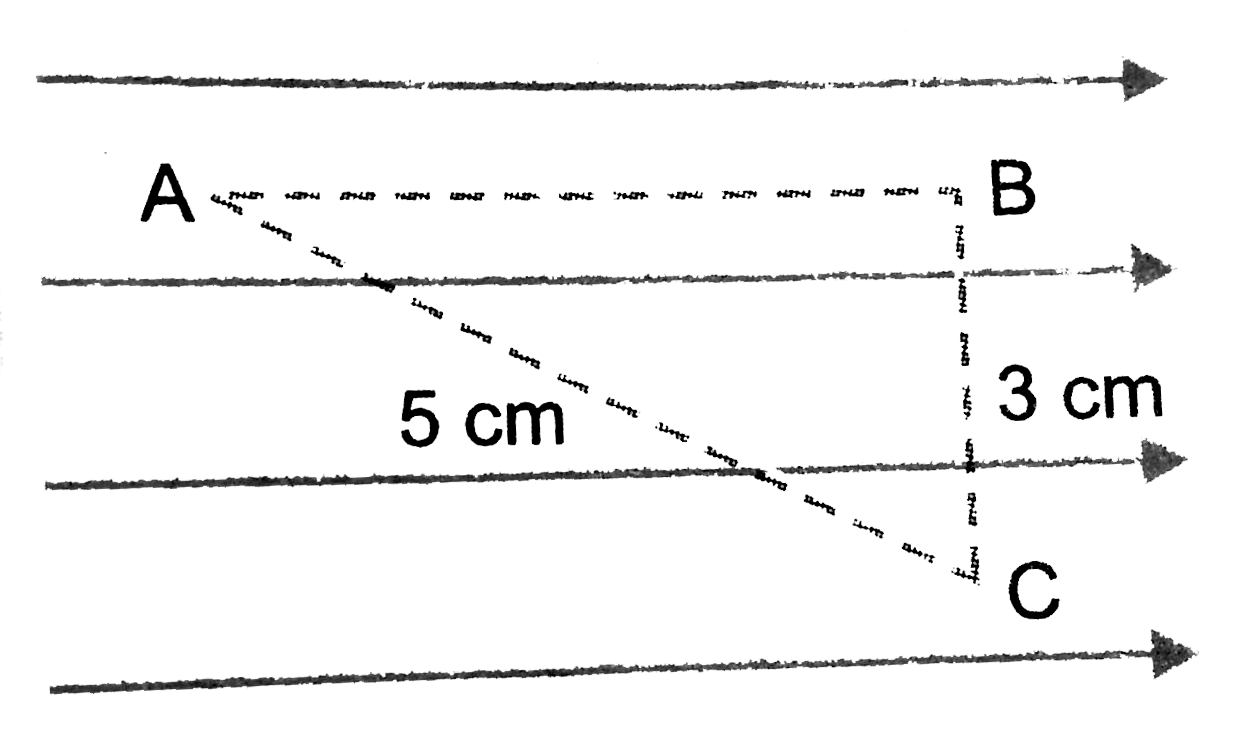
View SolutionAn electric circuit is shown in figure.The potential difference between the point A and B is. (A) 103 (B) 203 (C) 53 (D) 73
View SolutionCalculate the potential difference between the points A and B, and between the points B and C of figure in steady state

View Solution

